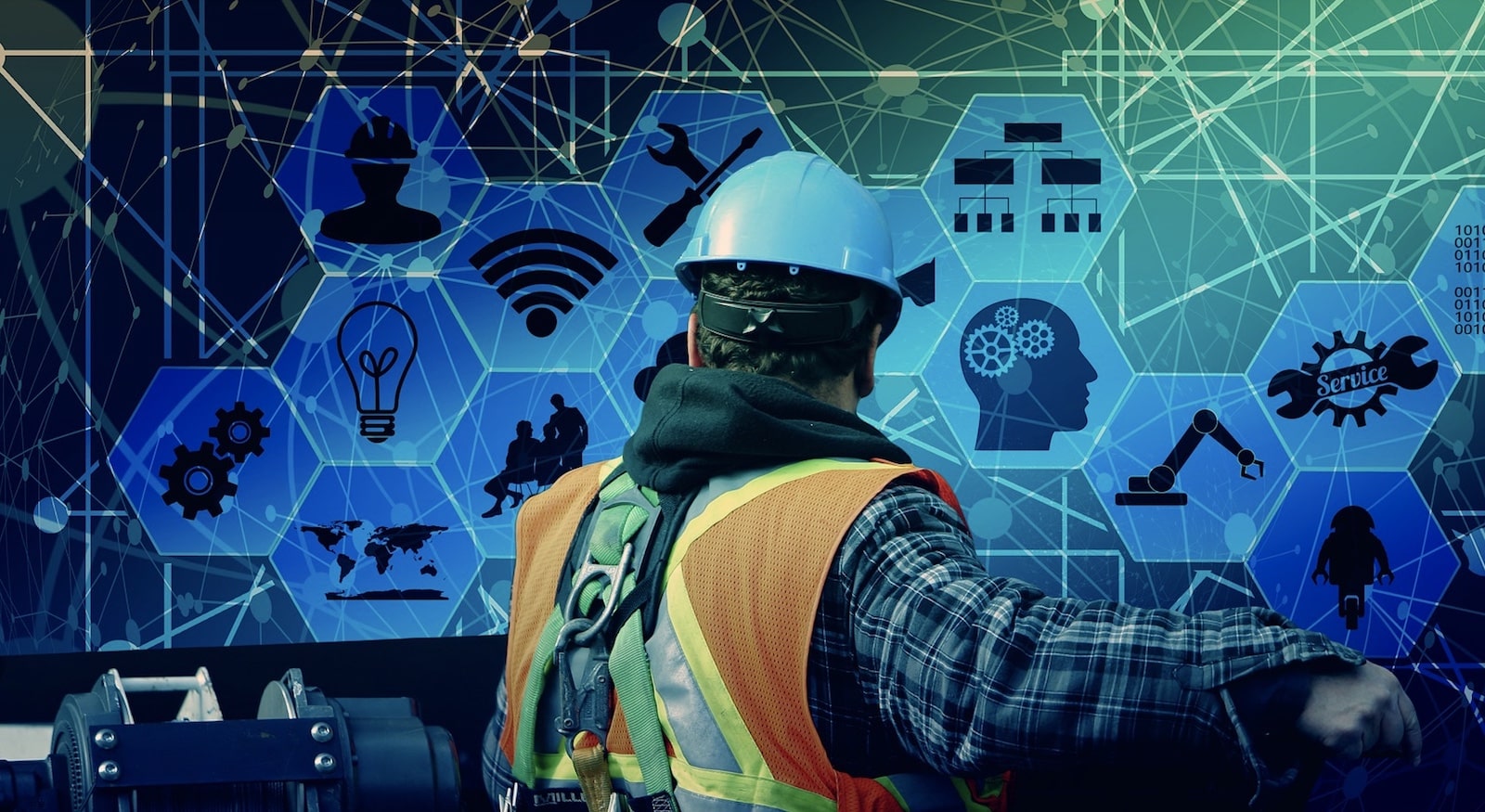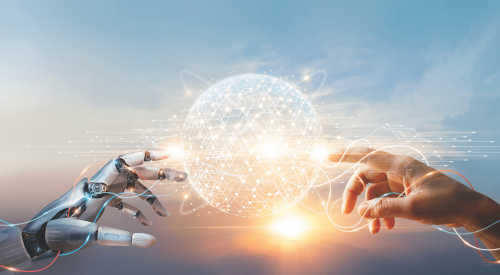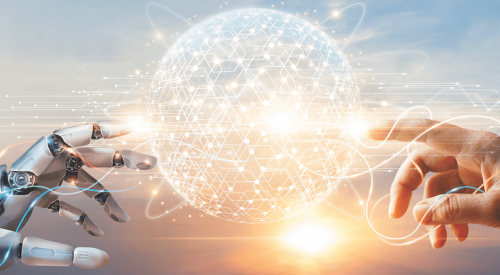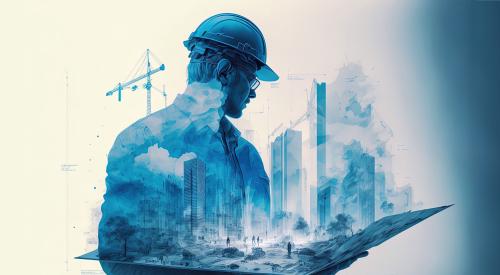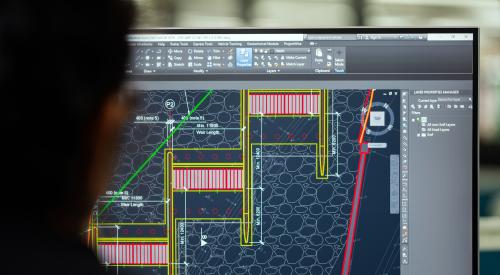When most people hear “machine learning” or “artificial intelligence,” the last thing that comes to mind is a technology that requires human interaction. Usually, it’s the opposite. More computers and more technology mean fewer humans need to be involved.
Machine learning can, however, improve the daily lives of humans in industries of all natures, particularly in construction.
While machine learning in construction may appear to be a distant concept decades away from becoming a reality, the technology’s future is closer than you think. In reality, machine learning has been gaining traction in the construction business for years and, simply put, rather than removing humans from the equation, it allows individuals to accomplish their jobs more efficiently.
RELATED
- Housing's Incremental Innovation Path
- 3 Home Building Innovations You Have to See [VIDEO]
- Housing, Industrialized: Your Road Map to Off-Site Construction
Driving Forces: Why Isn’t the Construction Industry Further Along in Adopting New Technology?
Because the construction industry has been slower to adopt the level of technological advancements applied in other industries, the job of constructing buildings has become increasingly difficult for its workers.
However, finding the resources to incorporate new technology while staying on track with building projects is difficult. Machine learning has the potential to propel the construction sector forward, improving conditions and productivity for workers, contracting organizations, and clients on a daily basis.
What Is Machine Learning and How Does It Work?
Before we delve too far into the topic, let’s make sure we cover the basics, especially if you’re unfamiliar with the notion. The definition of machine learning provided by the book Machine Learning: An Artificial Intelligence Approach centers on the definition of what it means to be intelligent: “the ability to learn is one of the most fundamental aspects of intelligent behaviour.”
With machine learning, machines essentially have the ability to learn without being explicitly programmed. So machines can self-learn and forecast outcomes based on what statistically significant patterns they discover in the data they are receiving. Instead of having a human program them, they employ software with algorithms that enable them to make predictions based on data analysis. A machine, for example, can alert you to the need for preventative maintenance based on data it collects from the equipment it’s monitoring.
Machine learning is now considered a subset of artificial intelligence (AI). It sounds like science fiction, but it has many technical and practical uses.
3 Ways Machine Learning Can Be Useful in Construction
There are plenty of ways in which machine learning can be used to help humans in the construction workplace, and it covers a range of different niches and considerations. Some of the most important include:
1. Improving Design Quality
Machine learning has the potential to improve the overall design of a building for its occupants. Workspace businesses (WeWork, for example) use the technology to better analyze and estimate the frequency of use for meeting rooms, allowing companies to optimize the design of those spaces before construction begins.
Machine learning can also assist workers in identifying potential design flaws and omissions before proceeding with construction.
2. Creating a Safer Workplace
Of course, safety on building jobsites is a top priority, and machine learning can help. Consider the testing of VINNIE [Very Intelligent Neural Network for Insight and Evaluation] artificial intelligence as reported by Engineering News-Record in 2016:
“VINNIE detected safety hazards, such as a person who was not wearing a hard hat, far more quickly and accurately than the human team. In comparison, a team of human specialists took over 4.5 hours to review over 1,000 entries, whereas VINNIE took less than 10 minutes. The human team correctly identified 414 photographs with persons, while VINNIE correctly identified 446.”
At the end of the day, a safer work environment benefits the entire workforce.
3. Assessing and Reducing Risk
Hand in hand with the above example is one of the most wonderful aspects of machine learning: its ability to predict dangers before they occur. For instance, using predictive analytics, machine learning can help you identify hazards, quantify their impact, and reduce or avoid them.
RELATED
- Data-Driven Builders Leave the Guesswork Behind
- Home Builder Marketing: The A.I.-Data Connection
- Can AI Predict Construction Hazards and Improve Safety?
What Does the Future of Machine Learning in Construction Look Like?
Machine learning requires enormous subsets of data to be effective and accurate. Lack of sufficient data is what’s currently preventing many small and medium-size construction firms from using this technology. Increasing the amount of data available and integrating it will help the entire sector progress to a better, more efficient, and more productive future, creating a critical mass of construction firms that can benefit from machine learning … especially if technological systems are integrated.
But lack of integration is one of the current hurdles construction faces because even if you have a large amount of digitized data available, unless technology platforms are adequately integrated, data will remain separated. That’s the case now in the construction industry overall and also within many building companies, which use multiple unintegrated platforms within their business. This will be something that needs to be addressed over time.
However, this is a challenge many businesses in a wide range of industries face, and is therefore a problem best solved collectively.
Conclusion: Machine Learning Works
Machine learning and AI in construction share an intriguing future together, starting right now. But while machine learning is expected to have an impact on the future of construction, this doesn’t mean machines and technology will take away human jobs.
Construction is and always will be a human endeavor. To win the future, we need our workers’ talents, competence, and invention to remain, we just need to optimize it. Machine learning can be used as yet another instrument to showcase our industry’s expertise and growth.

George J. Newton is a business development and technology writer, blogger, and consultant at Write my Essay and Thesis writing service. He also writes for Nextcoursework.com. George loves exploring new ideas and seeing where the human race is heading.
